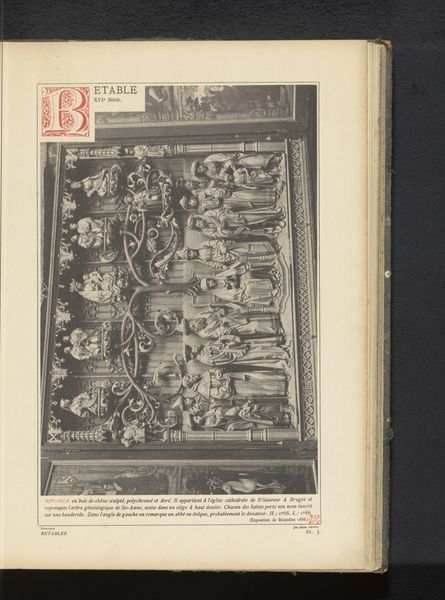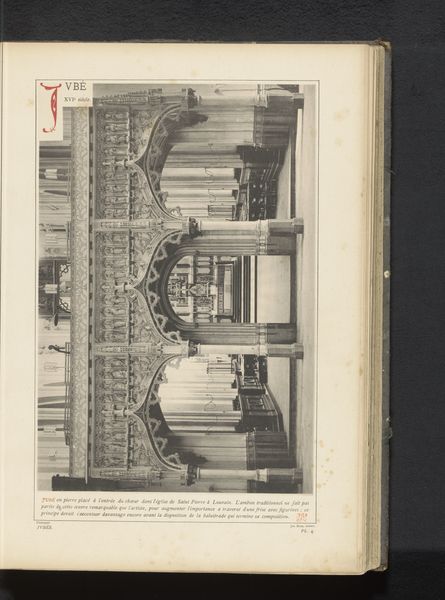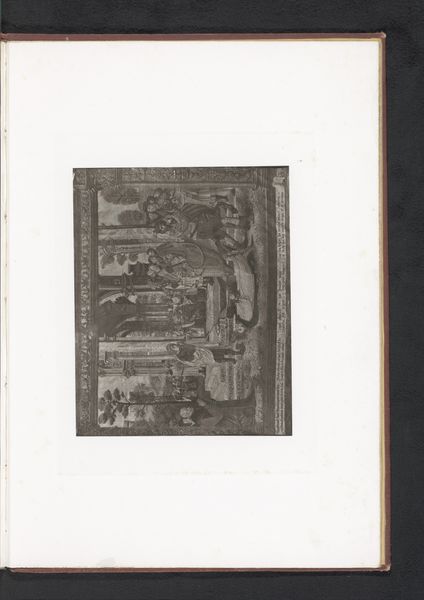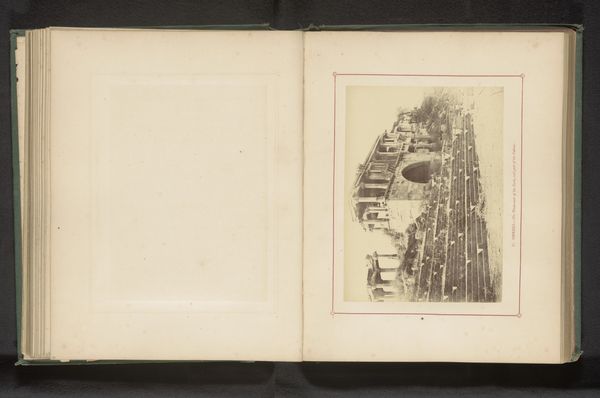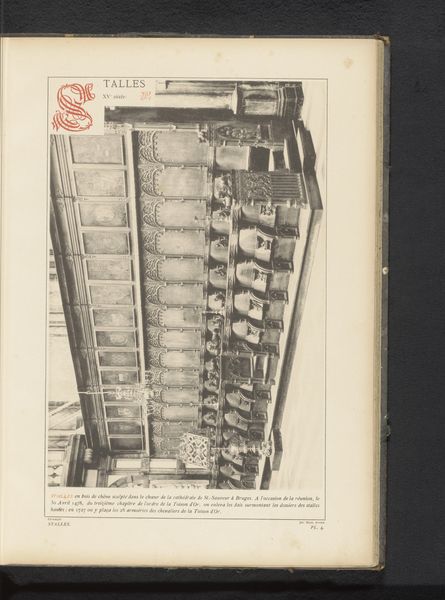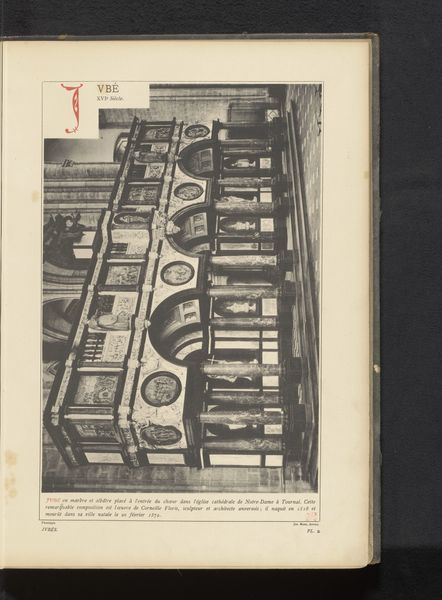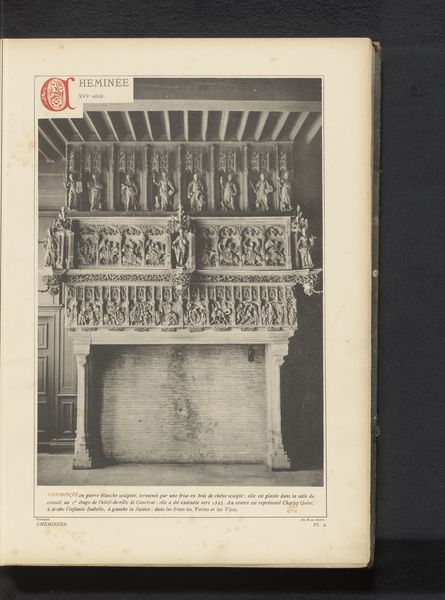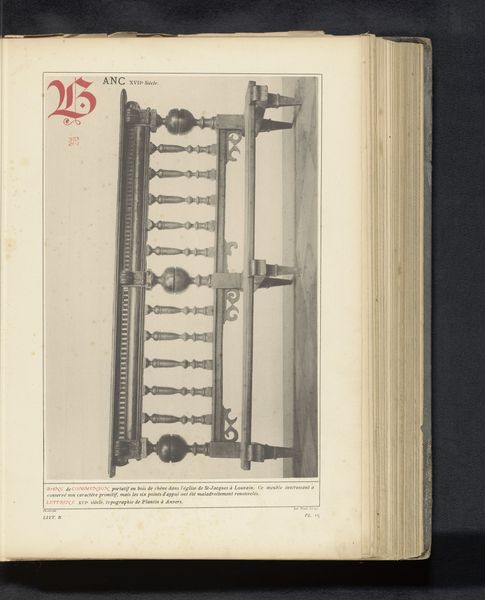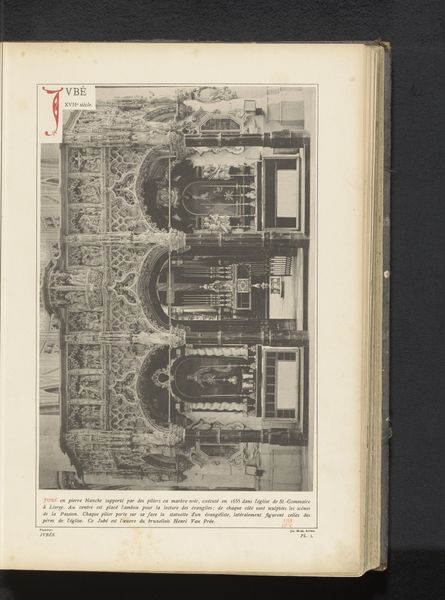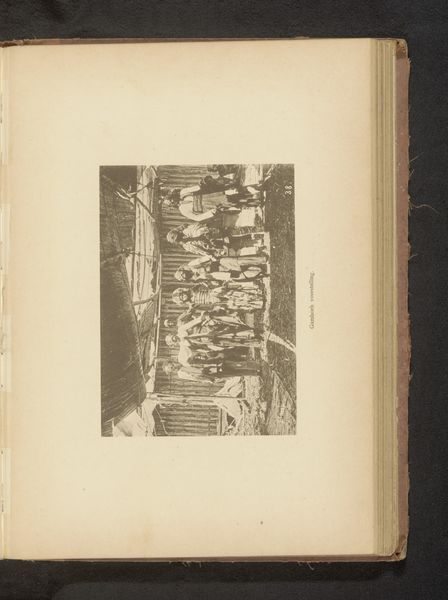
Relikwieënkast van de heilige Gertrudis in de Sint-Gertrudiskerk in Nijvel, België before 1887
0:00
0:00
print, photography, engraving, architecture
#
aged paper
#
homemade paper
#
paper non-digital material
#
medieval
#
paperlike
# print
#
paper texture
#
photography
#
personal sketchbook
#
paper-based
#
folded paper
#
letter paper
#
paper medium
#
engraving
#
architecture
Dimensions: height 229 mm, width 340 mm
Copyright: Rijks Museum: Open Domain
Editor: So, this is "Reliquary of Saint Gertrude in the Church of Saint Gertrude in Nivelles, Belgium." It’s an anonymous work from before 1887, captured through photography and engraving. The image gives off such a strong sense of the medieval era – all the detail on the reliquary cabinet, you can almost imagine its importance to people at the time. What can you tell me about the piece? Curator: Well, the photograph itself serves as a document reflecting late 19th-century interests in preserving and cataloging medieval religious artifacts. Notice the format, almost like a plate from an encyclopedia? This approach mirrors the broader cultural obsession with historical documentation and the classification of knowledge during that period. How do you think the display and photographing of religious objects like this shaped public perceptions of religion itself? Editor: I guess by putting it in what you describe as encyclopedia form, you risk removing some of the reverence. It makes it something to be studied rather than something holy, especially for the people looking at the photos far away from Belgium! It turns it into information. Curator: Exactly. The act of photography, especially its reproduction as a print, democratized access, but simultaneously divorced the reliquary from its original, sacred context. Did this enhanced visibility strengthen the religious belief or dilute it? Who was this imagery *for* and what role does the image play in reinforcing social structures? Editor: Interesting point. Maybe these images helped reinforce ideas about national or regional identity by celebrating historical religious objects. It gave people something shared to be proud of, as objects. Curator: Precisely. The photographic reproduction became a tool for constructing and reinforcing collective memory and perhaps served the emerging heritage industry. Editor: I hadn't considered the role of photography itself, in this case. It's like a filter affecting the object's perceived value. Thanks for making me see that! Curator: My pleasure. Reflecting on these elements enhances our understanding of its layered meaning!
Comments
No comments
Be the first to comment and join the conversation on the ultimate creative platform.
